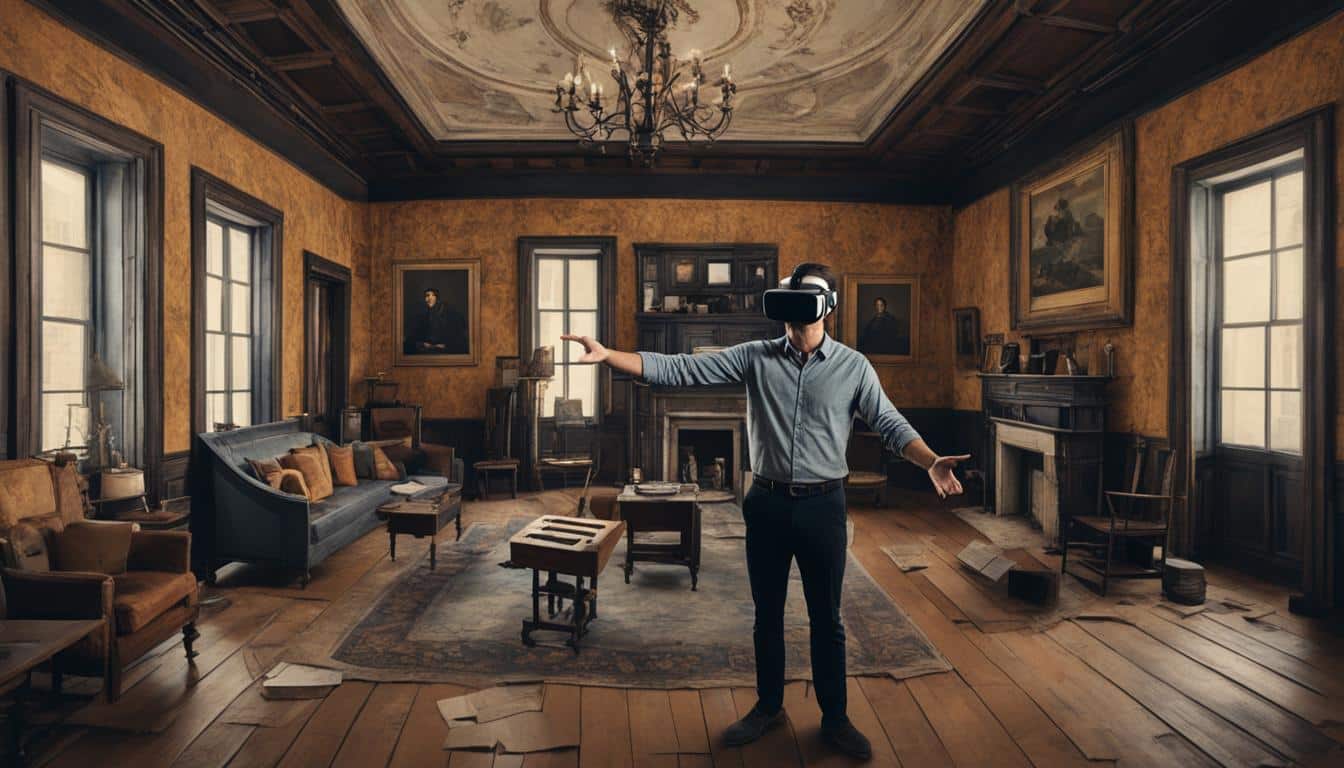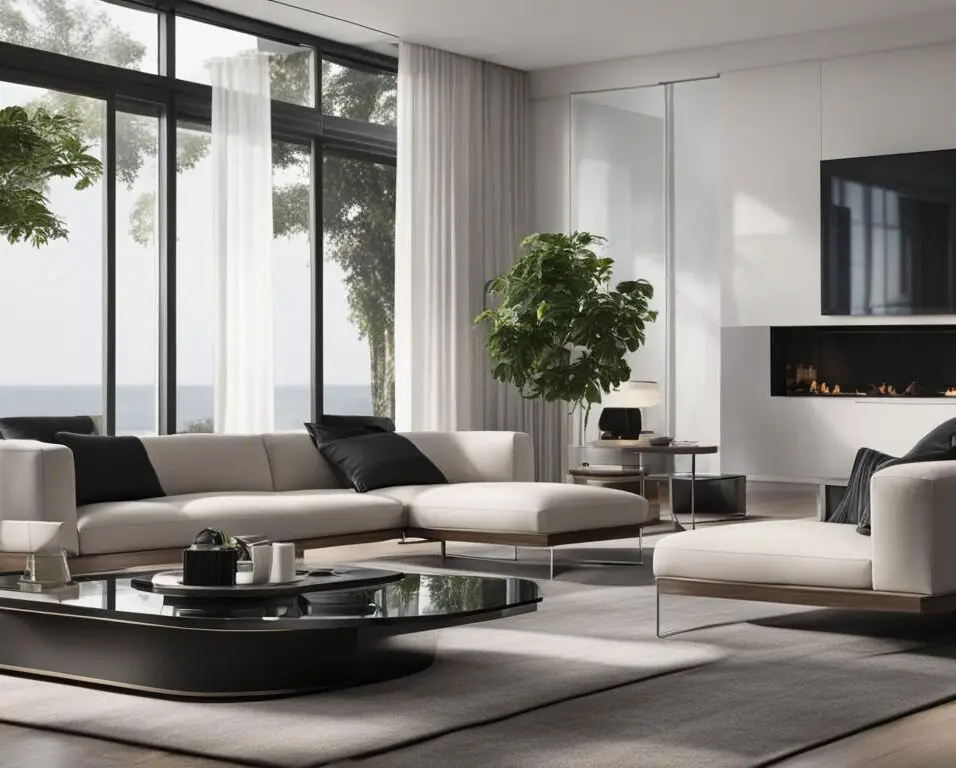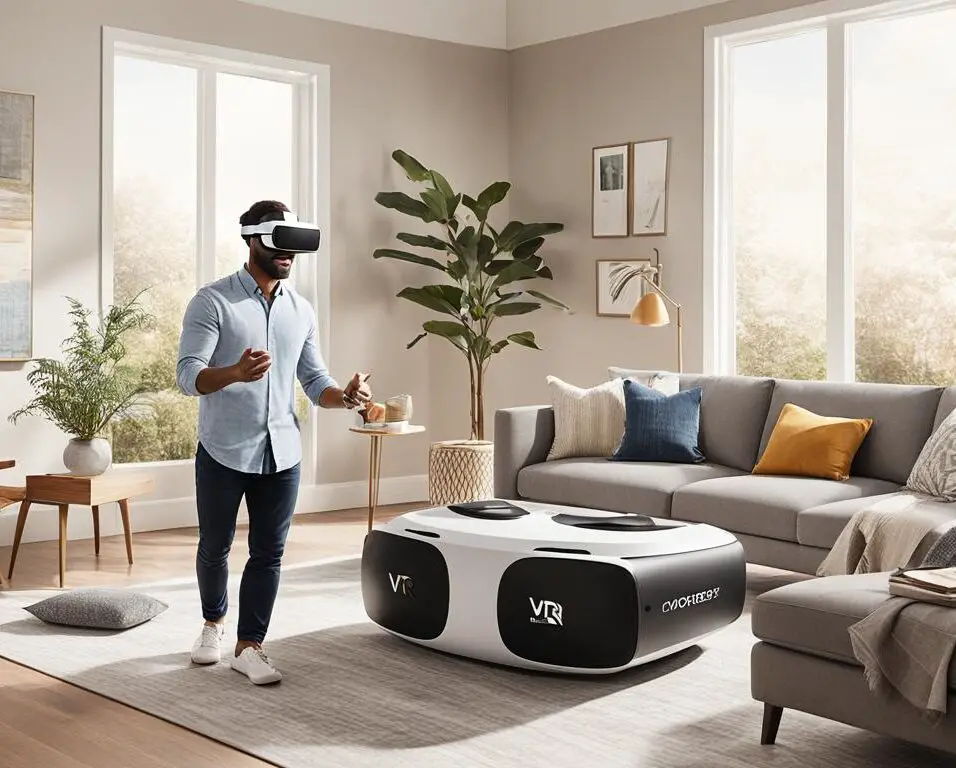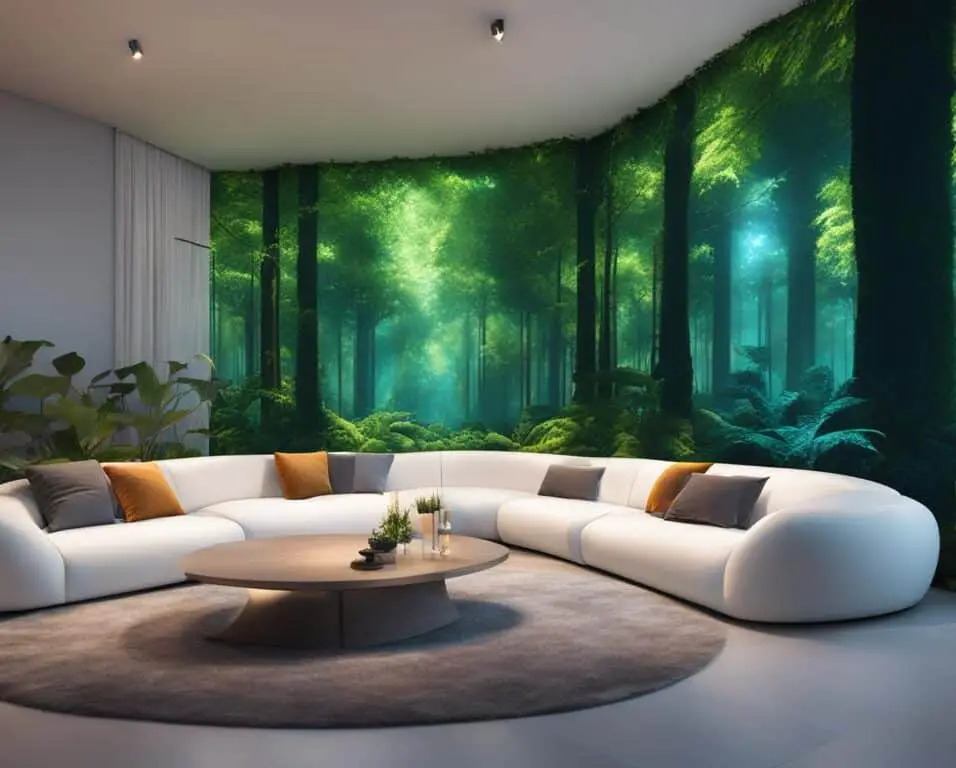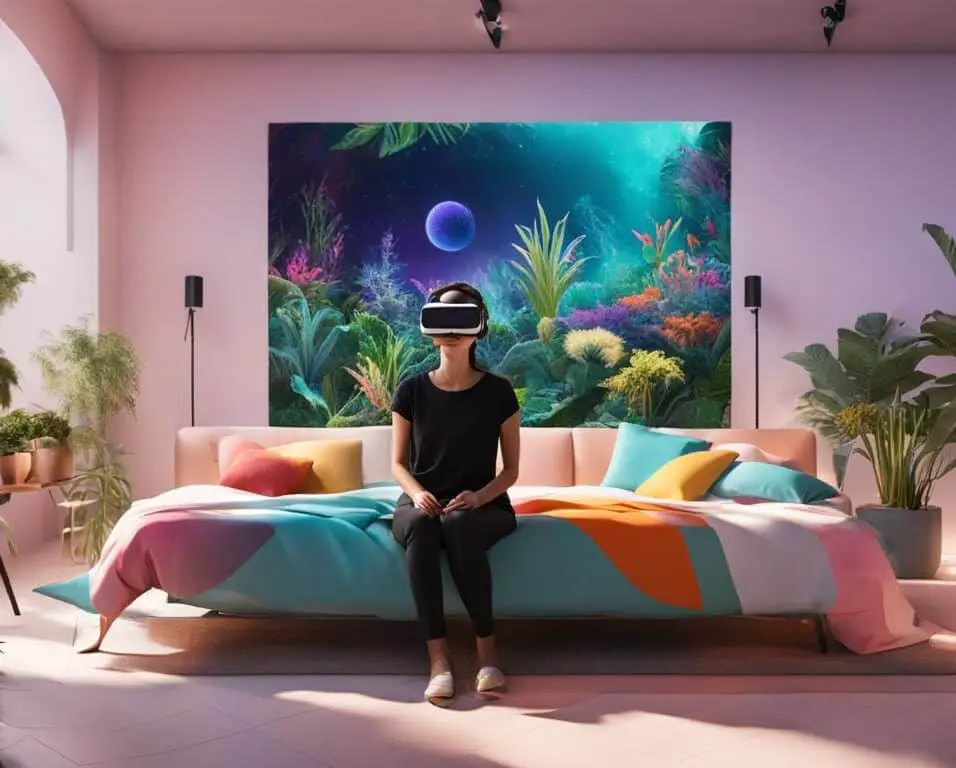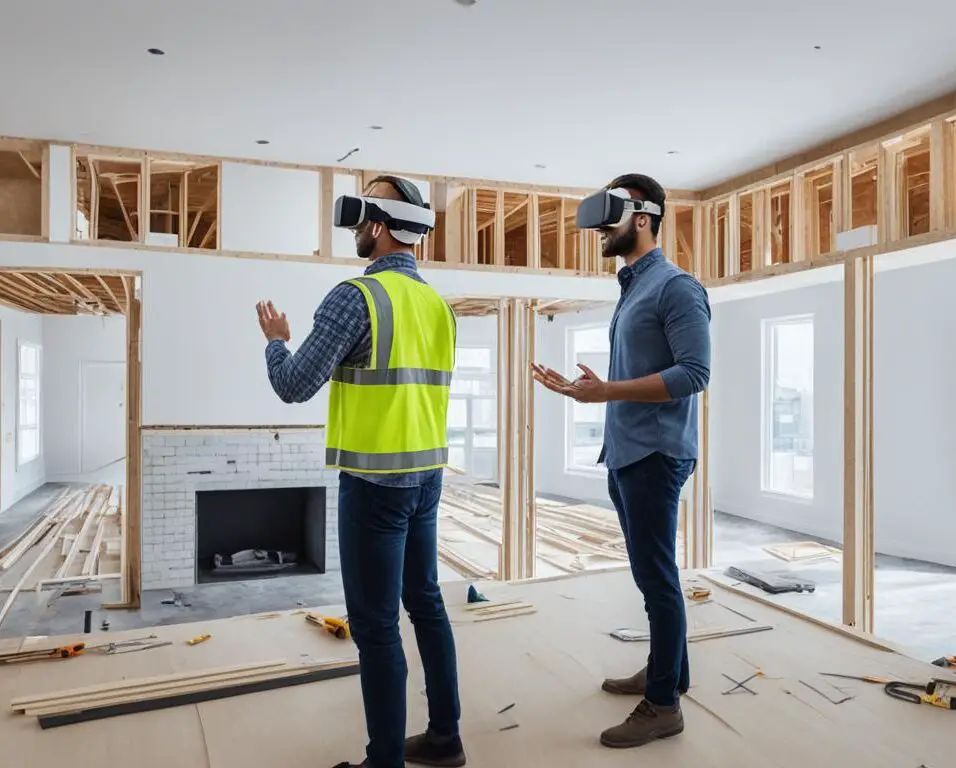Restoring the Past: VR for Historical Home Designs
Virtual reality technology is revolutionizing the way historical home restoration designs are created and preserved. With VR, architects and designers can immerse themselves in the past, exploring the intricate details of historical homes and gaining a deeper understanding of their original design. By leveraging VR, restoration efforts can be more accurate and efficient, ensuring the preservation of architectural heritage for future generations. This article explores the various applications of VR in historical home restoration designs, showcasing the benefits and advancements in this field.
Key Takeaways:
- VR technology enhances the accuracy and efficiency of historical home restoration designs.
- Architects and designers can explore the intricate details of historical homes through VR, gaining a deeper understanding of their original design.
- VR allows for precise measurements, accurate modeling, and realistic material selection, ensuring historical accuracy in restoration projects.
- Virtual walkthroughs using VR enable stakeholders to experience their vision before any physical work takes place, streamlining the decision-making process.
- VR plays a vital role in documenting and preserving architectural heritage, creating detailed digital archives and virtual museums for future generations.
The Power of Virtual Reality in Historical Home Restoration
Virtual reality (VR) technology has become a powerful tool for architects and designers involved in historical home restoration. Through immersive experiences and accurate modeling, VR allows professionals to recreate historical homes with remarkable precision, ensuring historical accuracy in restoration projects. This section explores the various ways in which VR enhances the restoration process, from virtual tours to improved collaboration, ultimately contributing to the preservation of architectural heritage.
Immersive Technology for a Deeper Understanding
VR enables architects and designers to take virtual tours of historical homes, granting them an up-close and intimate experience. By immersing themselves in these virtual environments, professionals can study every detail and capture the essence of the homes’ original design. The ability to explore the space firsthand enhances their understanding of historical architecture and helps them make informed decisions during the restoration process.
Precise Measurements and Historical Accuracy
In historical home restoration, maintaining historical accuracy is of utmost importance. VR technology allows architects and designers to take precise measurements and create accurate 3D models of historical homes. With VR, professionals can analyze minute details and ensure that the restoration aligns with the original design, preserving the historical significance of the structure.
Enhanced Collaboration and Visualization
VR facilitates better collaboration among the professionals involved in the restoration efforts. By sharing virtual environments, architects, designers, and other stakeholders can communicate their ideas effectively and visualize the proposed changes. This fosters a collaborative approach and streamlines the decision-making process, leading to more efficient and successful restoration projects.
| Benefits of VR in Historical Home Restoration | Examples |
|---|---|
| Accurate modeling for historical accuracy | Recreating intricate architectural details virtually |
| Efficient collaboration and communication | Virtual meetings and design reviews |
| Improved visualization and decision-making | Virtual walkthroughs and simulations |
Overall, the power of virtual reality in historical home restoration lies in its ability to create immersive experiences, ensure historical accuracy, and facilitate collaboration among professionals. By harnessing this technology, architects and designers can preserve architectural heritage and bring historical homes back to their former glory.
Enhancing the Restoration Process with VR
Virtual reality technology provides architects and designers with powerful tools to enhance the restoration process of historical homes. With the use of 3D modeling, professionals can create digital replicas of these architectural gems, allowing for experimentation with different design options. This enables them to visualize and fine-tune their restoration plans before any physical work takes place.
One of the key advantages of VR in restoration is the ability to achieve realistic material selection. By leveraging virtual reality, architects can explore a wide range of materials and finishes that closely match the original ones used in historical homes. This ensures that the restored property maintains its authenticity and respects its unique character and charm.
To further immerse stakeholders in the restoration vision, virtual walkthroughs using VR headsets provide an unparalleled experience. This allows them to explore the digital replicas of historical homes in a virtual environment, offering a realistic sense of space, scale, and design. Virtual walkthroughs enable stakeholders to gain a comprehensive understanding of the restoration plans, fostering better communication and alignment among all parties involved.
By integrating virtual reality into the restoration process, decision-making becomes more streamlined and efficient. Stakeholders can accurately assess design options, evaluate spatial layouts, and make informed choices regarding materials and finishes. This eliminates the guesswork and minimizes the chances for errors during the restoration process.
Furthermore, the use of virtual reality allows architects and designers to collaborate remotely, breaking down geographical barriers. Professionals from different locations can work together seamlessly, leveraging VR to share their ideas, insights, and expertise. This fosters a collaborative environment that harnesses the collective knowledge and experience of the restoration team.
In summary, virtual reality enhances the restoration process of historical homes by facilitating 3D modeling, realistic material selection, virtual walkthroughs, and remote collaboration. This technology revolutionizes the way architectural heritage is preserved, ensuring that historical homes are restored with utmost accuracy and attention to detail.
Preserving Architectural Heritage with VR
VR technology plays a vital role in the preservation of architectural heritage, providing a powerful means of documenting historical homes. With VR, architects and designers can capture every aspect of the design and construction of these remarkable structures, creating detailed digital archives that serve as invaluable resources for future reference and research.
By utilizing VR, we can ensure that historical documentation remains accessible and comprehensive, allowing us to delve into the intricate details that define each architectural masterpiece. The ability to virtually explore these homes in their original form provides a unique perspective and deepens our understanding of their historical significance.
Beyond documentation, VR technology offers an innovative way to bring architectural heritage to a global audience. Virtual museums provide people from around the world with the opportunity to explore and learn about historical homes without the limitations of physical access. This expansion of virtual access not only fosters greater appreciation for architectural preservation but also increases awareness of the importance of safeguarding our cultural heritage for future generations.
In summary, by harnessing the capabilities of VR, we can effectively document historical homes, create digital archives, and share architectural heritage with a broader audience. Through this technology, we have the power to preserve and celebrate our rich architectural legacy and ensure its longevity for generations to come.
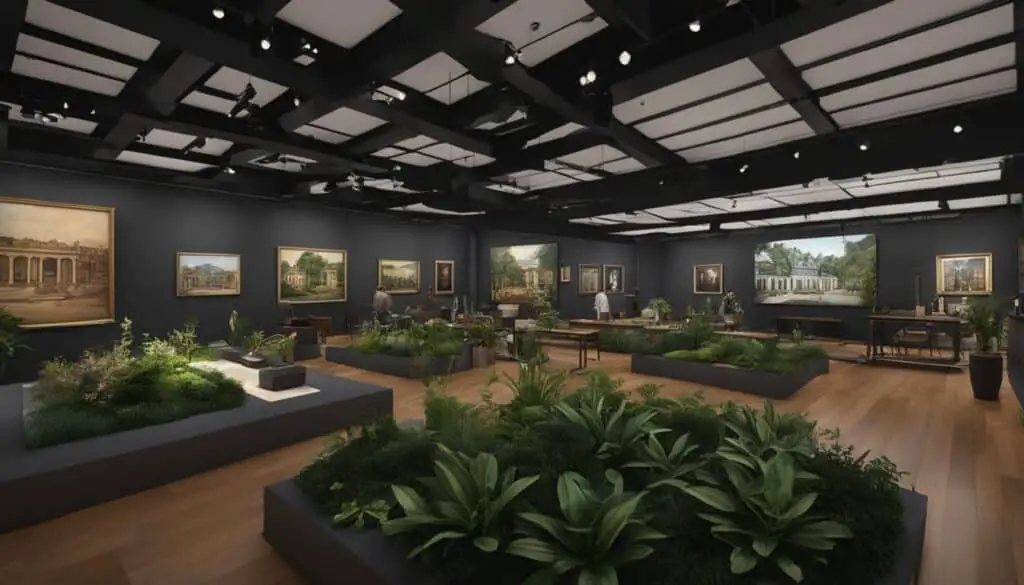
Key advantages of preserving architectural heritage with VR:
- Comprehensive digital archives provide a detailed record of historical homes
- Virtual exploration allows for a deeper understanding of architectural design
- Virtual museums make architectural heritage accessible to a global audience
- Increased awareness and appreciation for architectural preservation
| Advantages | Examples |
|---|---|
| Efficient documentation | Capturing intricate details in a digital format |
| Accessible research | Studying historical homes remotely |
| Enhanced preservation | Creating digital replicas for future reference |
| Global outreach | Virtual museums for worldwide exploration |
VR technology revolutionizes the preservation of architectural heritage by providing immersive experiences and comprehensive documentation. Through virtual exploration and digital archiving, we can safeguard and share the rich history embedded within historical homes.
Advancements and Future Possibilities of VR in Historical Home Restoration
The use of virtual reality (VR) technology in historical home restoration continues to advance, paving the way for exciting possibilities in the field. With ongoing developments in haptic feedback, AI integration, historical accuracy, and remote collaboration, VR is revolutionizing the restoration process and shaping the future of historical home designs.
Enhancing Immersion and Realism with Haptic Feedback
Haptic feedback technology is one of the latest advancements in VR systems, offering a tactile experience that enhances immersion and realism. Through haptic feedback, users can feel and interact with virtual environments, creating a more engaging and sensory-rich experience. In historical home restoration, haptic feedback allows architects and designers to physically sense materials, textures, and historical elements, bringing a new level of authenticity to their work.
AI Integration for Accurate Reconstructions and Missing Detail Prediction
The integration of artificial intelligence (AI) into VR systems is transforming the accuracy of historical reconstructions. By leveraging AI algorithms and machine learning, VR can analyze existing data and predict missing details in historical home designs. This integration enables architects and designers to generate more comprehensive and accurate representations, even when historical information is limited or incomplete. As AI technology continues to evolve, the potential for recreating lost architectural details becomes even greater.
Enabling Remote Collaboration for Global Restoration Projects
One of the significant advantages of VR in historical home restoration is its ability to facilitate remote collaboration among professionals from different locations. Through VR platforms, architects, designers, historians, and stakeholders can collaborate in real-time, breaking down geographical barriers and increasing project efficiency. Virtual meetings, design reviews, and collaborative decision-making become seamless, allowing for a more streamlined and dynamic restoration process.
| Advancements | Benefits |
|---|---|
| Haptic Feedback | Enhanced realism and immersion Improved tactile interaction with virtual environments |
| AI Integration | More accurate historical reconstructions Prediction of missing historical details based on existing data |
| Remote Collaboration | Efficient collaboration among professionals from different locations Real-time design reviews and decision-making |
The advancements in haptic feedback, AI integration, historical accuracy, and remote collaboration are transforming historical home restoration designs. These technologies not only enhance the immersive experience for architects, designers, and stakeholders but also contribute to the preservation and celebration of architectural heritage for future generations.
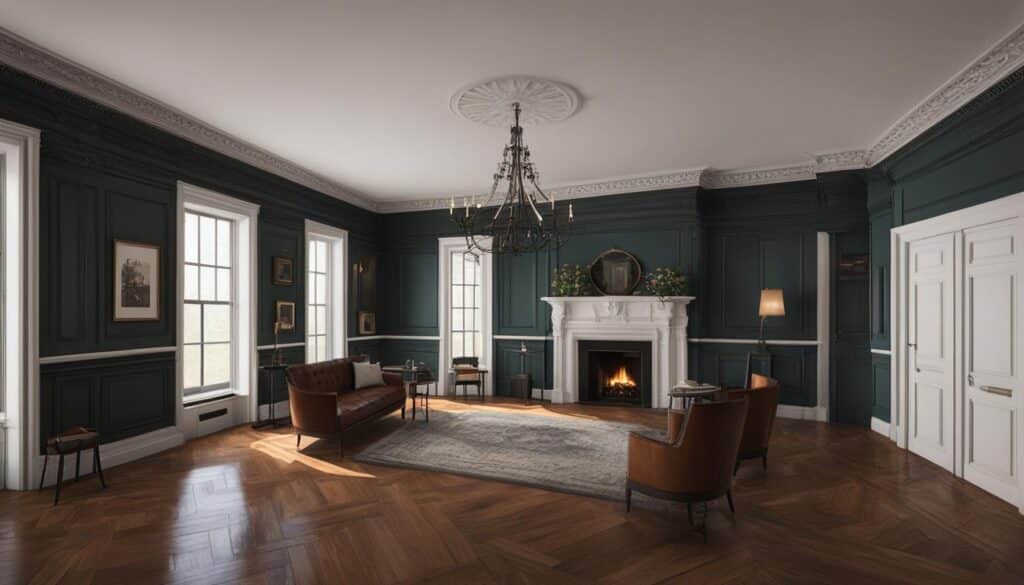
Conclusion
Virtual reality (VR) technology has transformed the world of historical home restoration designs, empowering architects and designers with an array of tools to safeguard architectural heritage. Through immersive experiences, accurate modeling, and comprehensive documentation, VR revolutionizes the restoration process and guarantees historical accuracy in design. Advancements in VR, such as haptic feedback and AI integration, unveil thrilling prospects for the future. By embracing VR, we can continuously cherish and preserve our architectural heritage for future generations.
FAQ
How does virtual reality technology benefit historical home restoration designs?
Virtual reality technology allows architects and designers to create immersive experiences that accurately recreate historical homes. They can take virtual tours, study every detail, and capture the essence of the original design, ensuring historical accuracy in restoration projects.
What tools does virtual reality provide for the restoration process?
Through 3D modeling, architects and designers can create digital replicas of historical homes and experiment with different design options. Virtual reality also allows for realistic material selection and provides immersive virtual walkthroughs, streamlining the decision-making process and reducing the chance for errors during restoration.
How does virtual reality contribute to preserving architectural heritage?
Virtual reality enables architects and designers to create detailed digital archives of historical homes, capturing every aspect of their design and construction. This documentation serves as a valuable resource for future reference and research. Additionally, virtual reality allows for the creation of virtual museums, expanding access to architectural heritage and increasing awareness of the importance of preservation.
What advancements are being made in virtual reality for historical home restoration?
Virtual reality technology is advancing with the integration of haptic feedback, providing a tactile experience that enhances immersion and realism. AI integration allows for more accurate historical reconstructions and the ability to predict missing details based on existing data. Remote collaboration through virtual reality enables professionals from different locations to work together on restoration projects, breaking down geographical barriers.
How is virtual reality revolutionizing the field of historical home restoration designs?
By providing architects and designers with a powerful toolset for preserving architectural heritage, virtual reality enhances the restoration process and ensures historical accuracy in design. Advancements in virtual reality technology, such as haptic feedback and AI integration, hold great promise for the future of historical home restoration designs.



